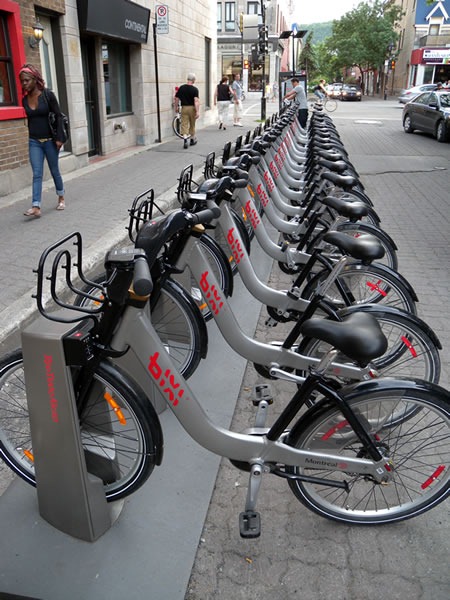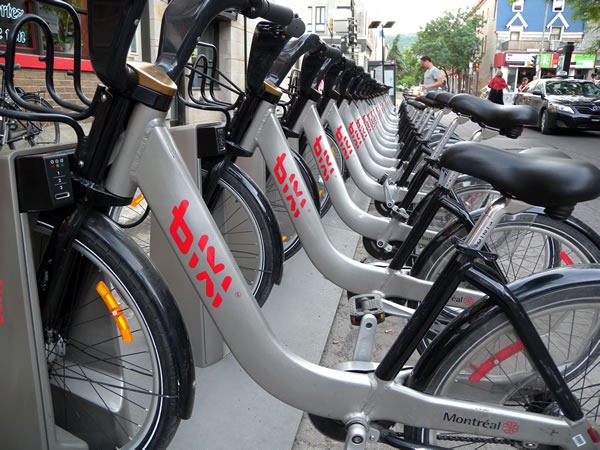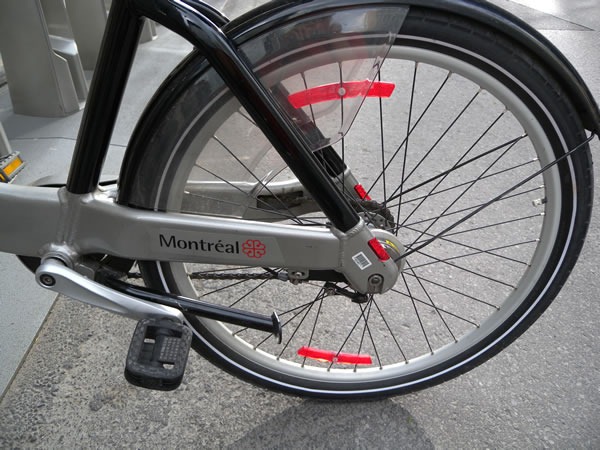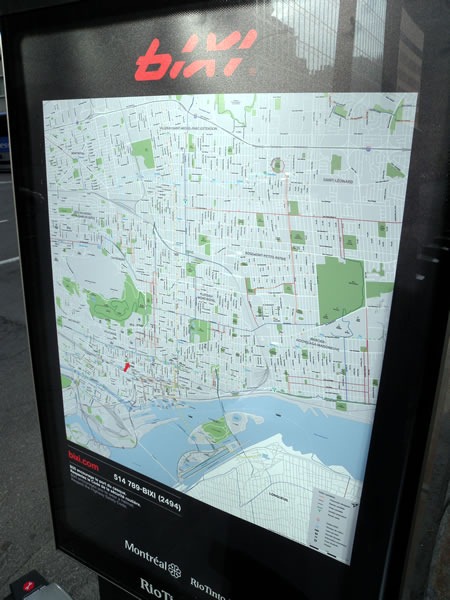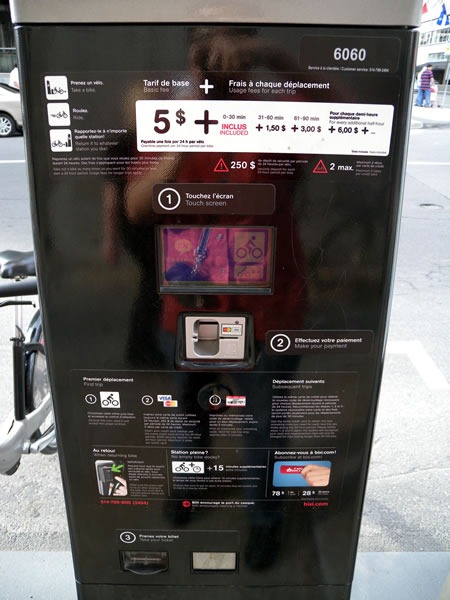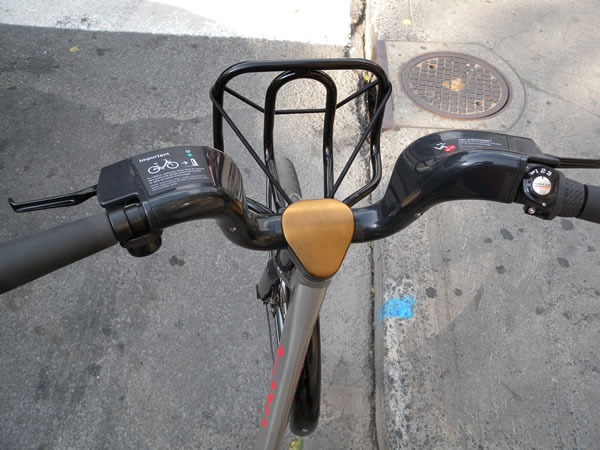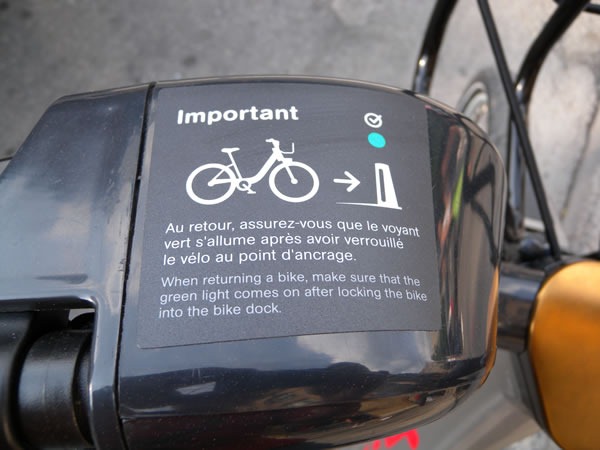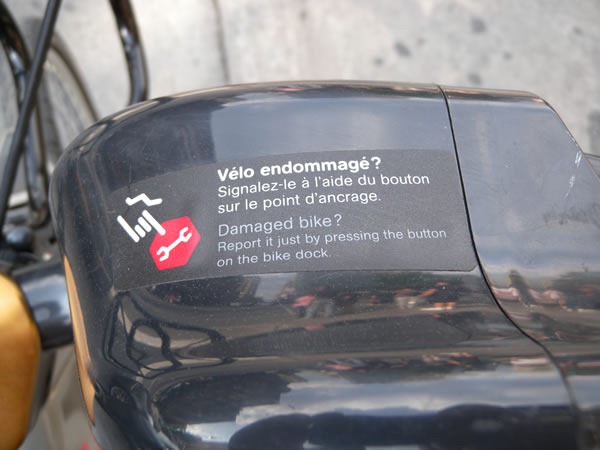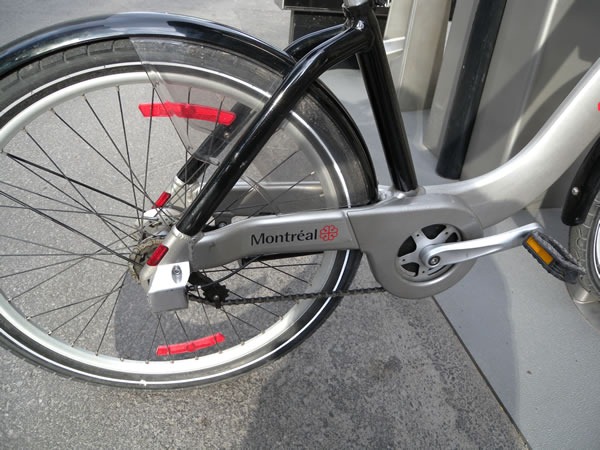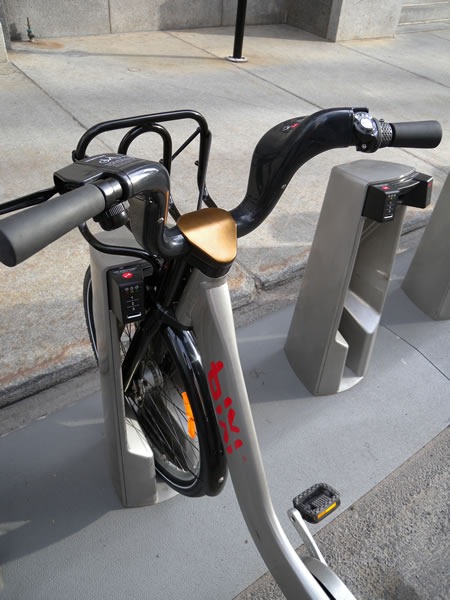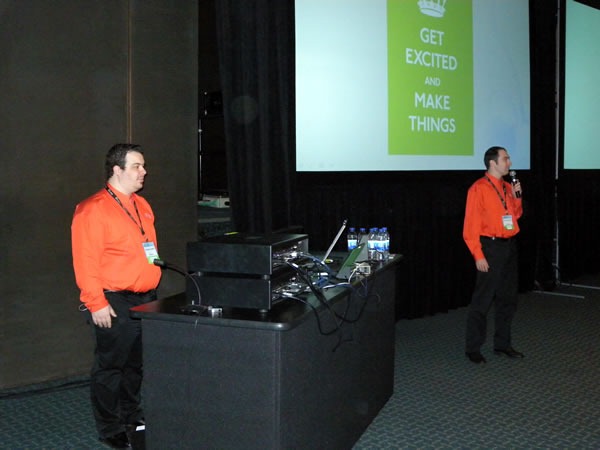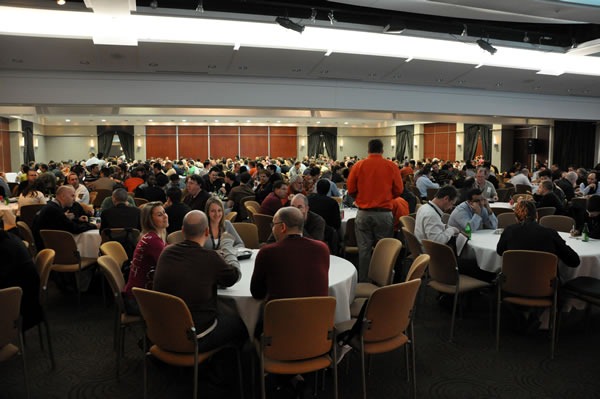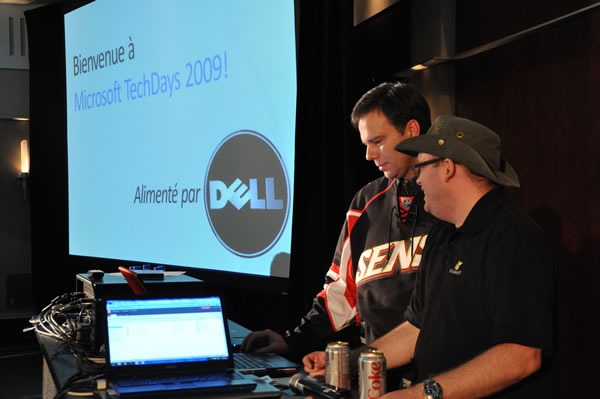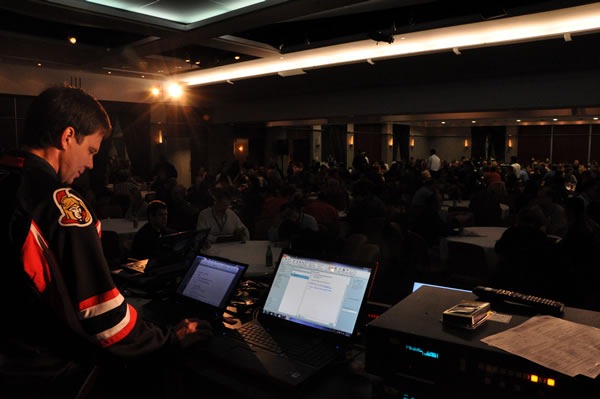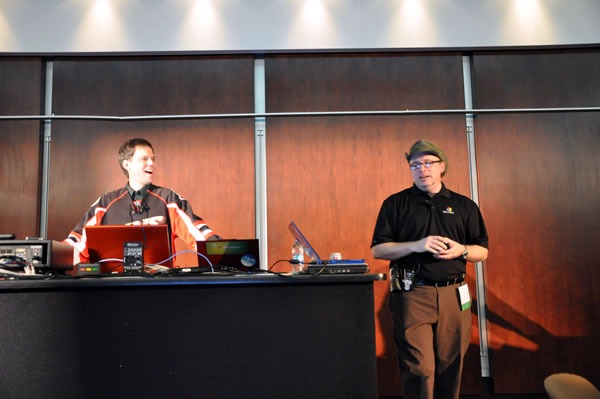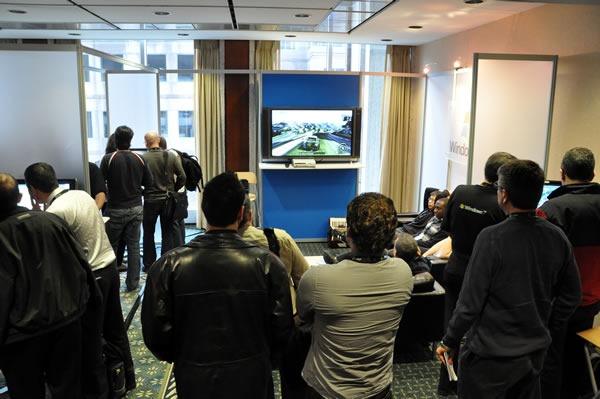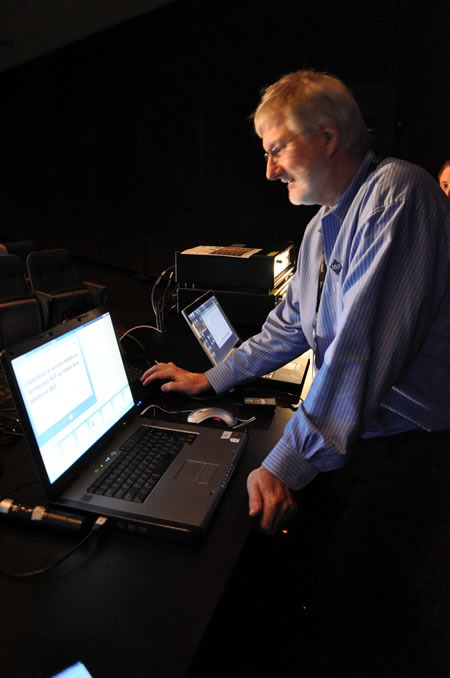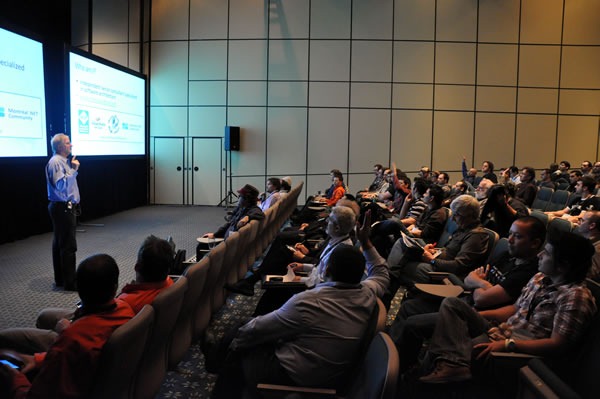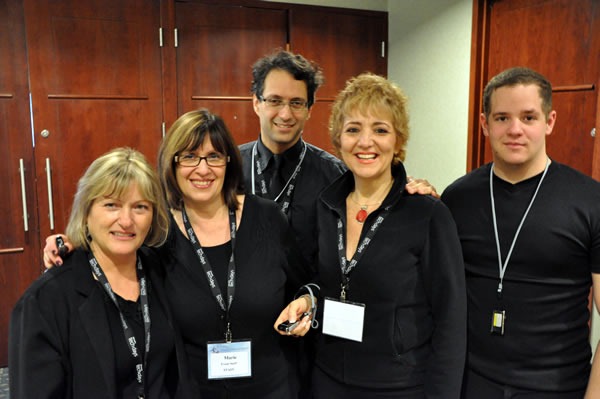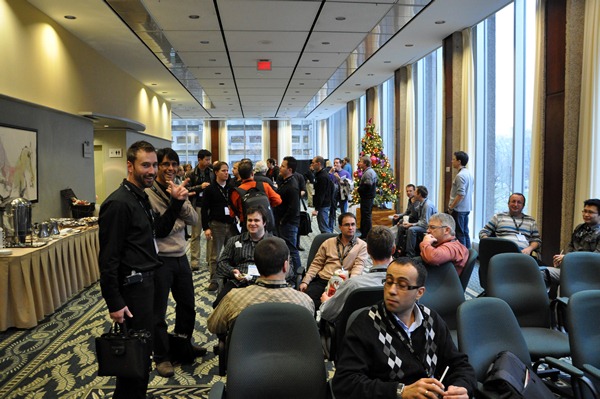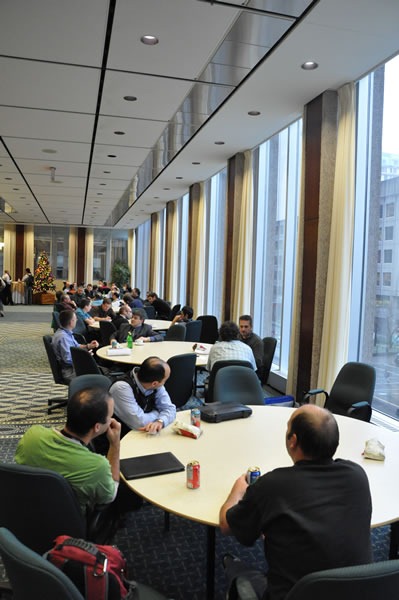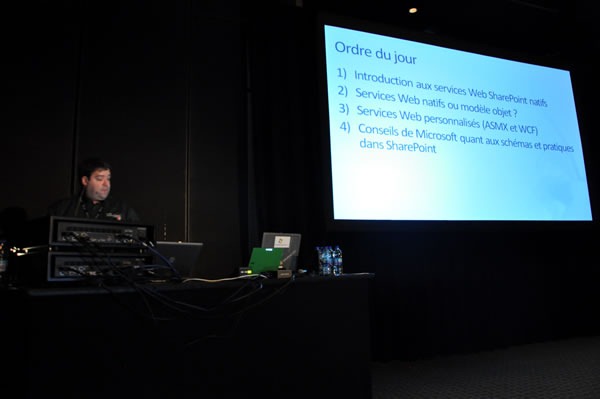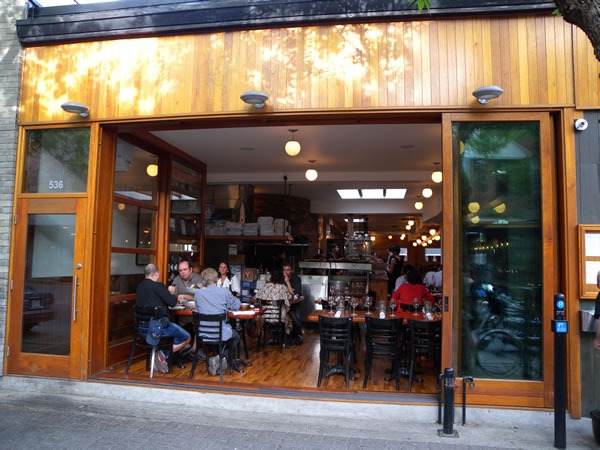
There are a couple of restaurants with the name Au Pied de Cochon, which translates as “with the pig’s foot”. There’s the one in Paris — a place that became popular for serving its namesake – whose glory days are probably long gone as it’s become a bit of a tourist trap. Closer to home is the one in Montreal run by Martin Picard, an adventurous chef whose hijinks you may have seen on Food Network Canada’s The Wild Chef, or if you speak French, on Radio-Canada’s Martin sur la Route (“Martin on the Road”). It’s probably one of the only shows where a TV chef has cooked a muskrat.
(My Quebecois friend Guy Barrette tells me that The WIld Chef is a bowdlerized version of Martin sur la Route; the French edition shows butchery that the producers think that English viewers wouldn’t stomach.)
The Ginger Ninja and I stayed in Montreal this past weekend to sample some restaurants we’d been meaning to try. One was the steakhouse called La Queue de Cheval (“the horse’s tail” – I should organize a tour of restaurants named after animal anatomy), the other was Au Pied de Cochon. We managed to squeeze ourselves into the first seating on Friday night – the place is always booked solid unless you make reservations well in advance – and I took some photos of our visit.
Au Pied de Cochon is far from stuffy. While the food is a little more adventurous than your typical bistro, the place is pretty down-to-earth (although well-kept). The layout isn’t all that different from a diner, you can get a hamburger – yes, it’s got chunks of foie gras in it, but it’s still a burger, and the staff (clad in black jeans and mechanic’s shirts with their names on patches) are not only friendly, they look like they love their jobs.

The can shown above line Au Pied de Cochon’s foyer. Canard en Conserve translates to “duck in a can”, one of the restaurant’s signature dishes. Chef Picard uses a number of unorthodox techniques for cooking, the best-known of which is canning. He has his own canning rigs in which he prepares a dish, cans it and then cooks it in the can.

We ordered a couple of appetizers. The first one, shown above, was an appetizer special. It was made of two potato pancakes with shaved cheese and ham between them, served with fiddleheads and walnuts and topped with a fried egg. It was delicious!
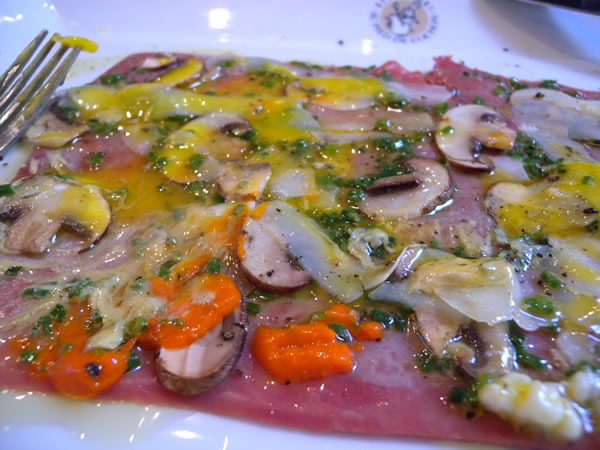
The second appetizer, shown above, was a regular on the menu: duck carpaccio topped with mushrooms, parmesan cheese and spices. It was topped with an egg yolk, hot mustard and hot sauce, which the waiter suggested we mixed together to form a sort of mayonnaise. I loved this one, and ended up sopping up the remaining goo with bits of the restaurant’s tasty baked-in-house bread.

Ask a Canadian outside Quebec what the official dish of Quebec is, and nine times out of ten you’ll get the answer “poutine” (I’ll have to ask some Quebecois what they believe their official dish is). Poutine is the perfect post-drinking food: fries covered in gravy and cheese curds. It’s popular all over Canada and has even been making inroads into the U.S. where they’ve been marketing them as “Quebec Fries”.
We ordered poutine as a side dish, which you can see on the left in the photo above. The fries are cooked in duck fat, and the gravy is made of pureed foie gras, egg yolks and cream. You can also order it as a main, topped with foie gras.
As for the dish on the right, that’s Duck in a Can, which I’ll describe later.
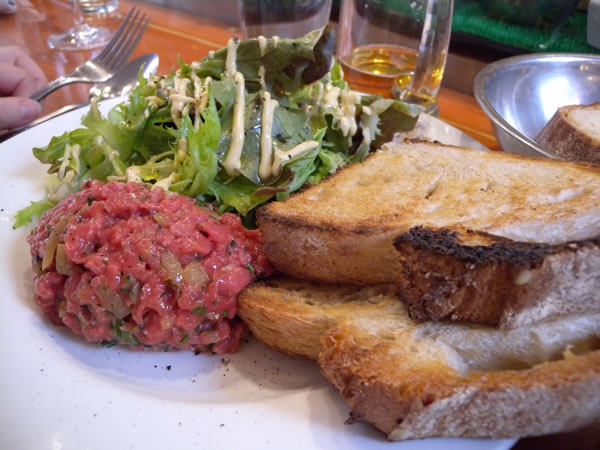
Wendy ordered the beef tartare, which is unusual for her – normally that’s the sort of thing that I would order. She chose it on the strength of a recommendation of our friend Jason Gorber, and it was delicious. It was served with a salad and two pieces of toast made from their wonderful bread.

This is Duck in a Can. In the can is a duck breast, a generous slice of duck foie gras, a slice of duck fat, balsamic vinegar, duck cabbage and a head of garlic. The whole thing is boiled in the can for a half hour and then the can in opened right in front of you and the contents are emptied onto a slice of toast covered in a puree of celery root and lardons (which is essentially French for “chunky bacon”). I was in fatty heaven.
You probably shouldn’t eat this every day, but life needs its pleasant vices, and I highly recommend this one.

We had seats at the bar right by the kitchen (I asked for them, because we love watching food being made – it’s dinner and a show, all in one). The photo above shows my empty can of duck, with the kitchen crew in the background, hard at work.
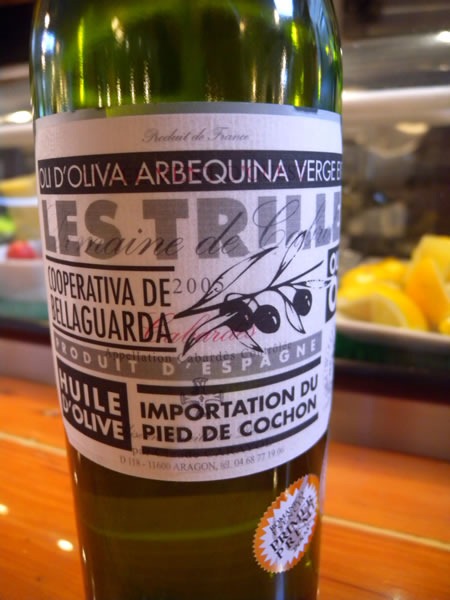
Au Pied de Cochon have their own olive oil specially commissioned from a co-op in Spain. It’s very good, and a great deal at $14 a bottle. We picked one up.

The next time we’re at Au Pied de Cochon, we’ll have to try their seafood. While half the kitchen is devoted to meat and fat, the other half has a lovely array of fruits de mer, which I also like.

Our meal, which consisted of:
- Two hearty appetizers
- Two very filling mains
- Beer (their own house beer, which went very well with all that fat)
- A bottle of olive oil to take home
…cost a grand total of CAD$132 before tip. For well-prepared food that you’re not going to find in many other places in such generous quantities, that’s a serious bargain.
If you’re going to Montreal (or if you live there), make sure you pay a visit to Au Pied de Cochon. I’m heading back there next time I’m in town.
I’ve posted my photos from Au Pied de Cochon at full size in a Flickr photoset, which you can also view in the slideshow below:
